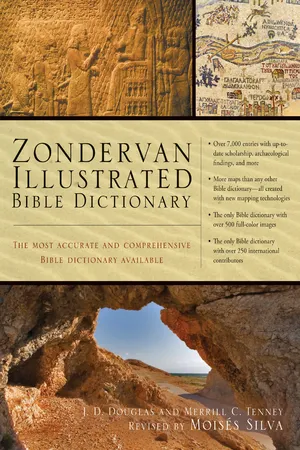![]()
A
A. The symbol used to designate Codex Alexandrinus. See SEPTUAGINT; TEXT AND VERSIONS (NT).
During Moses’ forty years in the wilderness Aaron had married ELISHEBA, daughter of AMMINADAB and sister of NAHSHON, a prince of the tribe of JUDAH (Exod. 6:23; 1 Chr. 2:10). They had four sons: NADAB, ABIHU, ELEAZAR, and ITHAMAR (Exod. 6:23).
After the Israelites left Egypt, Aaron assisted his brother during the wandering in the wilderness. On the way to SINAI, in the battle with AMALEK, Aaron and HUR held up Moses’ hands (Exod. 17:9-13), in which was the staff of God. Israel consequently won the battle. With the establishment of the TABERNACLE, Aaron became high priest in charge of the national WORSHIP and the head of the hereditary priesthood (see PRIEST).
In character Aaron was weak and occasionally jealous. He and Miriam criticized Moses for having married a Cushite woman (Num. 12:1-2; see CUSH #3). This complaint may have been an intentionally insulting reference to ZIPPORAH. (See Hab. 3:7 for a linking of MIDIAN and Cush; Zipporah is always elsewhere described as a Midianite.) Behind this personal slight lies a more serious threat to Moses’ position. Aaron was high priest and thus the supreme religious leader of Israel; Miriam was a prophetess (Exod. 15:20). The great issue was not whether Moses had married a particular person but whether he could any longer be considered the sole, authoritative mouthpiece of God. As Aaron and Miriam said, “Hasn’t he [the LORD] also spoken through us?” (Num. 12:2). It is in the light of this basic challenge to Moses’ God-given status that we must understand and appreciate the prompt and dramatic response of the Lord (12:4-15).
We may further note that Aaron’s own authority as priest did not go unchallenged. It becomes clear that when KORAH and his company (Num. 16) challenged Moses’ leadership, Aaron’s priesthood too was called into question. By the miraculous sign of the flowering and fruit-bearing staff, the Lord identified Aaron as his chosen priest (17:1-9) and accorded him a perpetual priesthood by ordering his staff to be deposited in the sanctuary (17:10).
When Moses went up Mount Sinai to receive the tablets of the law from God, Aaron acceded to the people’s demand for a visible god that they could worship. Taking their personal jewelry, he melted it in a furnace and made a golden calf similar to the familiar bull-god of Egypt. The people hailed this image as the god who had brought them out of Egypt. Aaron did not remonstrate with them but built an altar and proclaimed a feast to the Lord on the next day, which the people celebrated with revelry and debauchery (Exod. 32:1-6). When Moses returned from the mountain and rebuked Aaron for aiding this abuse, Aaron gave this naive answer: “They gave me the gold, and I threw it into the fire, and out came this calf!” (32:24). It may be that Aaron meant to restrain the people by a compromise, but he was wholly unsuccessful. See also CALF WORSHIP.
In the biblical narrative much is made of the consecration of Aaron and his sons as priests. The “dignity and honor” (Exod. 28:2) of their office was expressed in garments of great beauty and significance: the breastpiece, ephod, robe, tunic, turban, and sash. The ceremony of appointment is described in Exod. 29 and enacted in Lev. 8. It involved presenting a sin offering and a burnt offering on behalf of the priests-to-be (Exod. 29:10-14, 15-18), for though they were priests, they were first of all sinners needing the grace of God in atonement (Heb. 5:2-3). See SACRIFICE AND OFFERINGS.
The consecration included three special ceremonies: (1) their ears, hands, and feet were touched with the blood of a ram (Exod. 29:19-20), signifying respectively the hallowing of the mind and of the acts and directions of life—what they would hear, what they would do, where they would go; (2) they were anointed with oil mingled with the sacrificial blood (29:21), symbolizing the grace of God in atonement (blood) and endowment (oil); (3) their hands were filled with some of the fat of the slain beasts along with various sorts of bread, and the whole was lifted up in offering to the Lord (29:22-23). Just as we say that a busy person “has his hands full,” so they consecrated to the Lord the whole business of living—life’s special duties, seen in the fat of the sacrifices, and life’s ordinary cares and needs, seen in the bread. After eight days (Lev. 9:1) Aaron and his sons entered their public ministry, presenting the sin offering, burnt offering, and fellowship offering on behalf of the people. This first act of ministry received divine ratification in the appearing of the glory of the Lord and the fire of God that fell on the offering (9:23-24).
At the end of the wilderness wandering, Aaron was warned of his impending death. He and Moses went up Mount HOR, where Aaron was stripped of his priestly robes, which passed in succession to his son Eleazar. Aaron died at the age of 123 and was buried on the mountain (Num. 20:22-29; 33:38; Deut. 10:6; 32:50). The people mourned for him thirty days.
The Psalms speak of the priestly line as the “house of Aaron” (Ps. 115:10, 12; 118:3; 135:19), and Aaron is mentioned in Hebrews as a type of Christ, who was “called by God, just as Aaron was” (Heb. 5:4-5), though the eternal priesthood of ...


